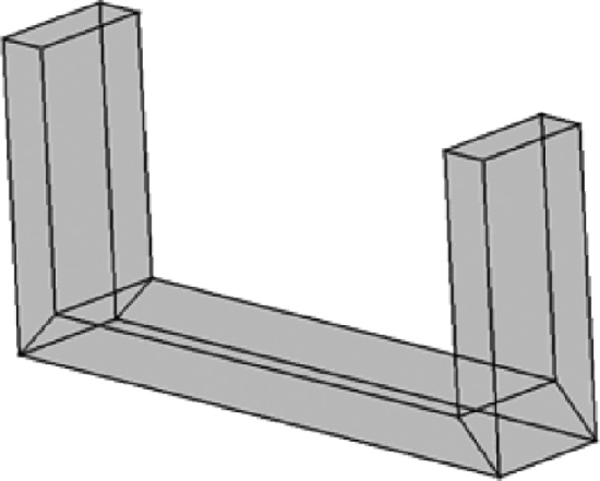5.7. Heating composite materials by induction
The previously determined electrical conductivity tensor of a fold allows us to model the behavior of the composite plates at the macroscopic level, thereby allowing us to confirm the circulation of currents within a fold and between folds.
The electromagnetic model is then associated to a thermal model to obtain the temperature distribution in a composite exposed to a magnetic field created by an inductor. Many experimental trials will then validate the developed electrothermal model.
5.7.1. Studied setup
The studied setup consists of an inductor linked to a generator whose frequency varies between 100 and 400 kHz and a stratified composite plate exposed to the magnetic field created by the inductor.
5.7.2. Inductor
The inductor used is a U-shaped inductor as shown in Figure 5.67:
Figure 5.67. Study’s inductor

The inductor’s length is 100 mm, width is 21 mm, and thickness is 8 mm. Depending on the power assigned to the generator, the current circulating in the inductor can vary between 0 and 500 A. The capacities in the generator’s impedance matching box impose a resonance frequency of 235 kHz. In this model, the generator is considered to be a perfect source of current.
5.7.3. The composite plates
The heating’s model and experiment concentrate on three materials with the following weave:
– Plan n°1: 13 folds [0/0/0/0/0/0/0/0/0/0/0/0/0]; ...
Get Electrothermics now with the O’Reilly learning platform.
O’Reilly members experience books, live events, courses curated by job role, and more from O’Reilly and nearly 200 top publishers.

